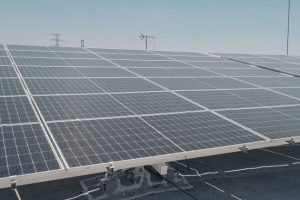Last year marked a significant step-change for the work on climate technology under the UNFCCC and Paris Agreement, setting the scene for more ambition in this crucial area in 2024.

Technology plays a fundamental role in galvanizing climate action and building a greener and more sustainable future. Technology is also a foundational means of implementation to deliver the unprecedented social and economic transitions that are needed to keep the goal of holding global average temperature to a maximum of 1.5°C alive.
At the UN Climate Change Conference COP28 in Dubai at the end of last year, UNFCCC Executive Secretary, Simon Stiell, said: “Only by working together, harnessing technology and making bold strides towards a new, better and more sustainable world, will we succeed in taming climate change.”
A key agreement at COP28 was the outcomes of the first global stocktake under the Paris Agreement, a key component of the “UAE consensus”, which calls on Parties to take actions towards achieving, at a global scale, a tripling of renewable energy capacity and doubling energy efficiency improvements by 2030.
Finance for climate technology is critical. As part of the decision, Parties established a technology implementation programme, supported by, among others, the operating entities of the Financial Mechanism, to strengthen support for the implementation of technology priorities identified by developing countries.
Artificial Intelligence rises to the fore
In 2023, the UNFCCC’s Technology Mechanism launched an initiative on Artificial Intelligence (AI) for Climate Action (#AI4ClimateAction) which is now garnering growing interest and engagement from a diverse range of stakeholders interested in exploring the role of AI as a powerful tool for advancing and scaling up transformative climate action. The main focus of the initiative is on developing countries, notably on least developed countries and small island developing States.
At COP28, the Technology Executive Committee (TEC) in collaboration with the Climate Technology Centre and Network (CTCN) and the COP28 presidency hosted a high-level event under the #AI4ClimateAction initiative to discuss various aspects of the application of AI for climate action to help accelerate the implementation of the Paris Agreement.
For example, AI-powered models can provide early warning systems to alert communities about impending disasters. And the efficiency and reliability of renewable energy systems can be improved by AI algorithms that predict energy demand and optimise grid operations.
TEC and CTCN step up cooperation
The TEC and CTCN continue to be a driving force for advancing climate technology and innovation in the UNFCCC process.
At a high-level event at COP28 that was hosted by the UAE COP28 presidency, Stiell called for international cooperation on technology and innovation. He also acknowledged “the profound commitment and commendable leadership of the TEC and CTCN in delivering results under the first joint work programme of the Technology Mechanism”.
Examples of how the two bodies are pooling forces are a flagship publication on technology and nationally determined contributions (NDCs, countries’ national climate action plans) and collaborative efforts to promote national systems of innovation and the development, deployment and scale-up of low-emission, climate-resilient technologies. Such technologies can be applied to water–energy–food systems, energy systems, buildings and infrastructure, along with the broader sectors of business and industry.
Diversity and inclusion increased to boost effective climate technology
Diversity and inclusion are crucial for effective climate technology. At COP28, the TEC and CTCN launched a Gender and Climate Technology Expert Roster that will serve as a global pool of female experts in the area of climate technology and of female and male experts on gender and climate change.
The TEC also joined forces with the Local Communities and Indigenous Peoples Platform under the UNFCCC to co-convene a multi-stakeholder dialogue at COP28 and showcase indigenous technologies and technologies from local communities.
The Technology Mechanism will continue to utilise its convening power for supporting transformational changes aligned with the Paris Agreement in the landscape of climate technology policy and action though such collaborative and participatory approaches.
Looking ahead: Key milestones for climate technology in 2024
- Parties and relevant stakeholders are invited to submit their views, via the submission Portal, on maintaining and enhancing collaboration and cooperation between the Technology Mechanism and the Financial Mechanism by February 1, 2024, considering a set of guiding questions. For Non-Party stakeholders without observer status, the guidance for submission of views is available here.
- The TEC and the CTCN, in consultation with the Chair of the Subsidiary Body for Implementation (SBI), will organise an in-session workshop during the next UN Climate Change Conference in Bonn in June 2024 (SBI 60) to take stock of the linkages between the Technology Mechanism and the Financial Mechanism taking into account the views expressed in the submissions.
- The 28th meeting of the TEC is scheduled to take place from April 16 to 18 in Copenhagen, Denmark, followed by the joint session of the TEC and CTCN Advisory Board on April 19, and the 23rd meeting of the CTCN Advisory Board from April 22 to 24. The main objective is to take stock of the implementation of the Joint Work Programme and to consider the outcomes of the UAE Consensus, including the technology implementation programme and guidance from the Parties to the TEC and the CTCN.
